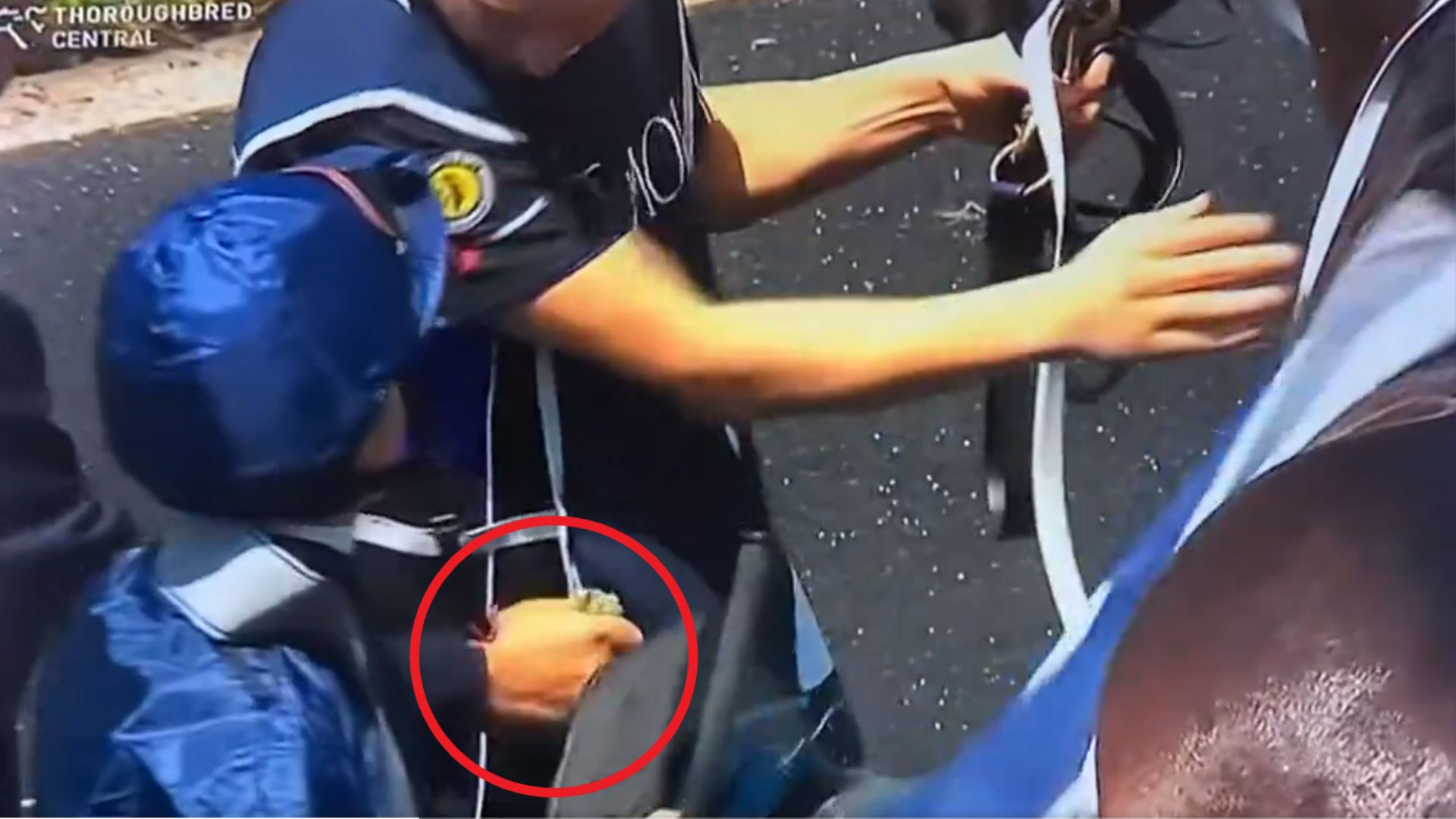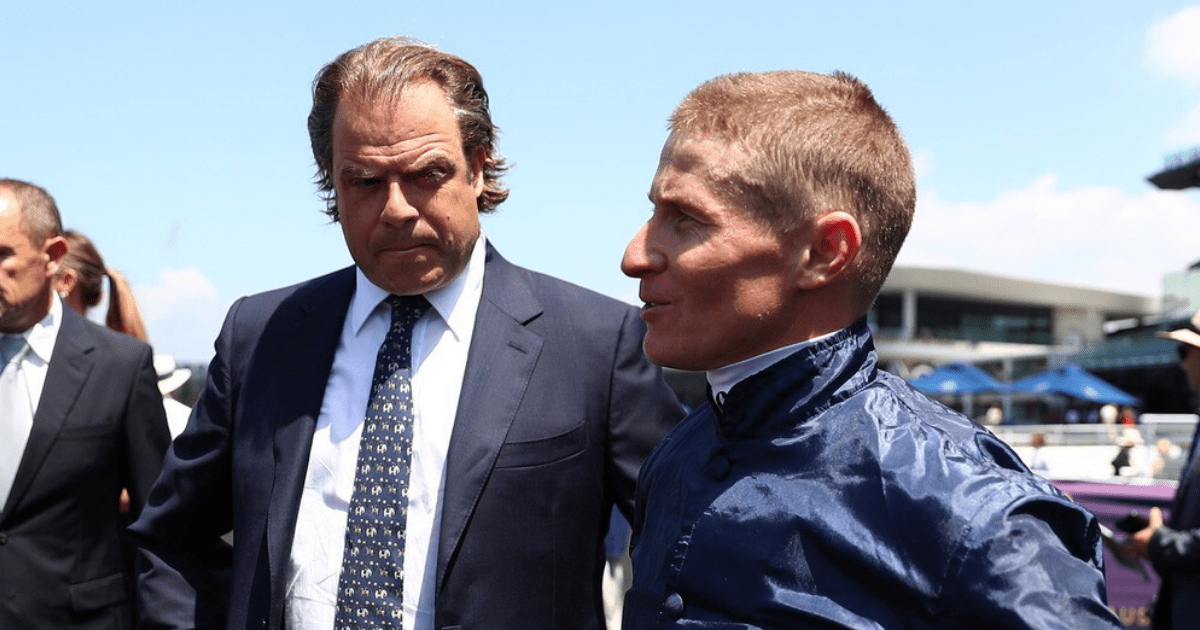Billionaire Tom Magnier's Heartwarming Gesture
Billionaire horse owner Tom Magnier left viewers 'absolutely astounded' with his surprise gift for a groom in the winner's enclosure. The son of racing magnate John Magnier, Tom heads up the all-conquering Coolmore operation in Australia.
A Generous Act of Kindness
After the victory of the promising two-year-old colt, Switzerland, cameras caught Magnier handing the groom a roll of cash, showcasing his generosity and appreciation for the hard work behind the scenes.
Online Praise for Magnier's Gesture
Viewers were quick to applaud Magnier's act of kindness, with many expressing their admiration for keeping the tradition alive. The video of the incident spread online, with punters commending Magnier for his generosity and class.
Switzerland's Bright Future
With Switzerland's impressive earnings and potential victory in the lucrative Golden Slipper race, Magnier's kind gesture towards the groom highlights the camaraderie and appreciation within the horse racing community.

Frequently Asked Questions
Can you train your racehorse anywhere?
While initial training on a variety tracks is possible, specific race preparation often requires facilities to simulate the conditions a horse will encounter in competition. It is important to use tracks that are the same size as the actual track the horse will be racing on. The correct track will help condition your horse and give them the experience they need in that racing environment.
When can a horse be expected to start racing training?
Horses may begin their basic training as yearlings but they will usually begin more rigorous racing training and conditioning at around two years. This is when their bodies are mature enough to handle the stresses of the track while still being young and adaptable for the learning process. The exact timing can vary depending on each horse’s temperament and development.
How do you prepare a race horse?
It is important to condition a horse gradually. This includes long distance training to build stamina along with shorter workouts that increase speed. It is important to strengthen the horse’s cardiovascular system, muscles, and skeletal structures over time by following a regiment that mimics racing conditions without causing injury.
How can I maintain the mental well-being of my racehorse?
It is equally important to maintain a racehorse’s psychological health as it is its physical fitness. The psychological health of racehorses is influenced by a variety of routines, regular turnout in pastures, mental stimulation and patient, gentle handling. To prevent stress, it is important that the horse be socialized and has a stable and calm environment.
What’s the role of a jockey in training a racehorse?
The jockeys are essential in the training and development of racehorses. Jockeys not only provide feedback to the horses on their performance during training, but they also educate the horses about racing tactics such as pacing and positioning. Good jockeys are able to identify the strengths and weaknesses of their horses, which is essential for race preparation.
What health precautions are necessary when training a racehorse?
Preventing injury and illness requires that you pay attention to your racehorse’s health. It is important to have regular veterinary exams, receive vaccinations, provide dental care, and maintain proper hoof health. Equally important is monitoring the horse for signs of fatigue, strain, or discomfort. A well-planned training program that allows for a gradual increase in intensity will help reduce the risk of musculoskeletal injury.
Statistics
- The average cost to train a thoroughbred racehorse for one year can exceed $50,000, accounting for expenses related to training, boarding, and veterinary care.
- The average racehorse reaches its peak physical ability between the ages of four to five, with some variation based on the breed and individual development.
- Statistically, less than 1% of thoroughbred foals born each year will go on to win a stakes race.
- Around 80% of thoroughbred racehorses begin their racing careers by the age of two, according to industry estimates.
- The Injury Database from The Jockey Club reports that synthetic racing surfaces have a lower horse fatality rate than dirt tracks, with a statistically significant difference of 1.2 fatalities per thousand starts on synthetics compared to 2.0 on dirt tracks.
- The majority of racehorses in training are subject to an exercise regimen that includes being ridden six days a week.
External Links
thoroughbred-racing.net
keeneland.com
bloodhorse.com
paulickreport.com
equibase.com
britishhorseracing.com
How To
How to Create a Racehorse’s Training Program
An effective racehorse training program will balance strenuous exercise with the necessary rest. Mix up your workouts by incorporating a mixture of walking, galloping and breezing throughout the week. This will help you build fitness. To allow your muscles to repair themselves and for mental recovery, designate rest days. Seasonal training cycles in relation to the horse’s racing calendar. Tapering activities before a race will ensure peak performance.

